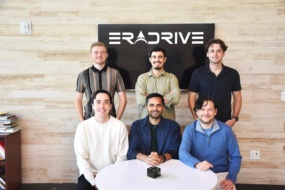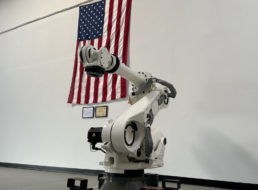Auriga Space, a CA-based startup working on kinetic space launch, wants to take the rocket science out of launch.
The company won a $1.25M Direct-to-Phase II AFWERX contract to support the development of a new hypersonic lab accelerator—named Prometheus and slated to be operational next year— the company announced Wednesday.
Auriga’s eventual goal is to provide rapid launch capabilities using tech more akin to high speed maglev trains than rocket engines. In the near term, the Prometheus test facility will provide low-cost hypersonic testing for government and commercial clients.
“Rockets are highly inefficient machines, right? Less than 2% of the total rocket mass is what gets into space, and over 90% of that is fuel. So, I’ve been fascinated with solving that problem, figuring out alternative ways of getting into space [that are] a lot more efficient,” Auriga CEO Winnie Lai told Payload.
Payload chatted with Lai during her recent trip to DC to meet with DoD officials and discuss the company’s future—and how Auriga fits into the military’s goals for US space dominance.
Questions and answers have been edited for length and clarity.
Was the initial thought that Auriga would be a dual use or commercial-focused company? Does this contract represent a shift in that original idea?
I wouldn’t call it a shift. It’s always been part of the roadmap for us to be a dual use company, but publicly, we haven’t come out and said, “Hey, we’re doing business with the Department of Defense.” We wanted to wait until we had a substantial contract—which is this Direct-to-Phase II—to make that announcement.
Can you talk through the technology?
There are multiple accelerators we’re going to build. So, the first two accelerators are Prometheus, which is our lab accelerator, and Thor, which is our outdoor accelerator. Those are going to be used for conducting hypersonic testing.
Today, if a large government prime wants to test their hardware, they can use wind tunnels or they can go test at the Holloman rocket test track. That costs millions, if not 10s of millions of dollars to do one test, and you have to wait over two years. The final option would be to pay hundreds of millions of dollars to conduct a realistic flight test, but as you can imagine most of those options are beyond the reach of most organizations, not to mention that people want to test often.
What we provide is this unique ground test facility that can produce what we call a “quiet” flow. The test article is actually moving through the air, so it’s much more representative of flight dynamics.
All we need is electricity to be able to power the system, and therefore, we are capable of drastically reducing the cost. Also we can test multiple times per day. We can run aerodynamic tests, we can run ballistic/impact testing, and materials testing.
Are all these tests supported in this first Prometheus site?
Those are all tests that we can support with Prometheus. We’re also supporting weather testing. For example, how is this material going to behave at high speeds flying through rain or ice?
How has the team changed since coming out of stealth last year?
Right now, we’ve got a dozen people working out of our Garden Grove facility. Now that we won this Air Force contract, we’re going to hire more people to be able to support that contract.
We picked that building so that there is room to build Prometheus. We looked at other spaces before moving in, and we just couldn’t find a building that was long enough to support our long accelerator. It’s mixed use, we have some office space and some lab space. And we also have 1.3 megawatts of power going into our building, which is more than enough to support the type of testing that we’re conducting.
What kinds of conversations are you having on your trip to DC?
High level, the reason I’m here is to have two separate meetings at the Pentagon. First of all, is space launch. Space is a critical area for the US. In particular, thinking about how we can reconstitute and launch satellites on a moment’s notice if one of our satellites is under threat. So, that’s of high interest to the US government.
They’re also always looking at new technologies, new innovative ways of expanding the DoD’s and the nation’s portfolio of capabilities, so we fall under that. The near term is our hypersonic capabilities. Being able to provide them with some cost effective and also high cadence test campaigns, so that we can unblock some of the major bottlenecks with the long lead test times at the test facilities. They were just very interested overall, in what we can provide, both in the short term, as well as in the long term.




